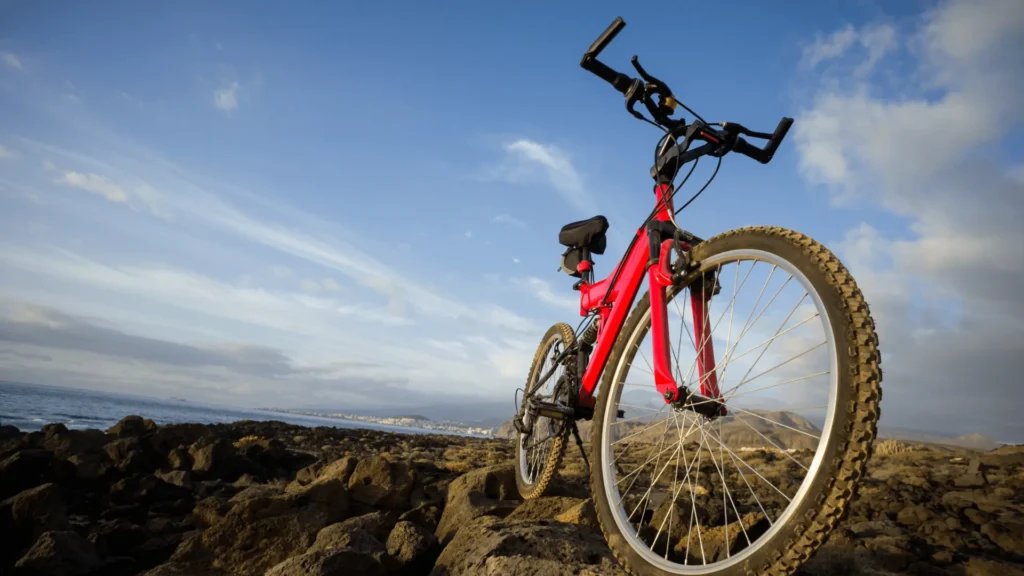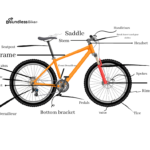Are you looking to upgrade your mountain bike handlebars but not sure how wide should mountain bike handlebars be? The width of your handlebars can greatly affect your riding experience and performance on the trails. In this blog post, we will discuss how to measure your current handlebars, the benefits of wider handlebars, and how to choose the right width for your riding style. So let’s dive in and find out what size mountain bike handlebars are best for you!
How Wide Should Mountain Bike Handlebars Be?
When it comes to mountain bike handlebars, there is no one-size-fits-all approach. The ideal width for your handlebars depends on a number of factors such as your riding style, body proportions, and personal preferences.

To begin with, wider handlebars provide more stability and control when navigating technical terrain. This makes them a popular choice among downhill riders who require greater leverage for steering and braking at high speeds.
However, if you mostly ride cross-country trails or prefer tighter turns, narrower bars may be the better option. They offer quicker handling and can help reduce fatigue in your arms during longer rides.
It’s also important to consider your body proportions when selecting the right handlebar width. Riders with broader shoulders will typically feel more comfortable using wider bars while those with narrow shoulders may find narrower bars more suitable.
Ultimately, finding the perfect fit for your mountain bike handlebars requires some trial and error. Experimenting with different widths can help you determine what works best for you based on comfort, performance and overall enjoyment of the ride!
Some Popular Mountain Bike Handlebar Widths
When it comes to mountain bike handlebars, there is no one-size-fits-all solution. The width of your handlebars will depend on several factors such as riding style and personal preferences. However, there are some popular mountain bike handlebar widths that you can consider when choosing the best fit for your ride.
The most common mountain bike handlebar width ranges from 720mm to 780mm. These widths provide a balance between maneuverability and stability, making them ideal for cross-country riders who want to traverse different terrains.
For enduro or all-mountain riders, wider bars with a range of 760-800mm may be more suitable. This is because these handlebars provide better control and leverage during steep descents while still allowing enough room for quick turns.
Downhill riders often opt for even wider bars ranging from 800-840mm. This is because they need maximum stability and control at high speeds and through technical sections where precision is crucial.
Keep in mind that wider isn’t always better if it doesn’t match your body type or riding style. Always test out different widths before making any decisions to ensure comfortability on the trails.
| Riding Style | Handlebar Width |
|---|---|
| Cross-Country | 680-720 mm |
| Trail | 720-760 mm |
| Enduro | 760-800 mm |
| Downhill | 800-820 mm |
How to Measure Your Mountain Bike Handlebars
Measuring your mountain bike handlebars is essential in determining the right width for you. The process is relatively easy and can be done using a measuring tape or ruler.
First, measure the distance between the two ends of your handlebars to get your current handlebar width. This measurement should be taken from one end to the other, excluding any grips or bar plugs.
Next, measure where you place your hands on the bars when riding aggressively. This measurement should be taken from one hand placement point to another.
It’s important to note that different types of riding require different widths. For example, downhill riders usually prefer wider bars for better stability and control at high speeds while cross-country riders may opt for narrower bars for improved aerodynamics.
In addition to measuring width, it’s also important to consider rise (the height difference between center and ends) and sweep (the angle at which the bars are bent back). These factors can affect comfort and handling as well.
By taking accurate measurements and considering your riding style, you’ll have a better idea of what size mountain bike handlebars will work best for you.
What are The Benefits of Wide Mountain Bike Handlebars?
Wide mountain bike handlebars have become increasingly popular over the years, and for good reason. There are several benefits to using wider handlebars on your mountain bike.
Firstly, wider handlebars provide increased stability and control while riding. With a wider grip, you have more leverage to steer and maneuver your bike through technical terrain. This makes it easier to maintain balance and avoid crashes.
Another benefit is improved comfort during long rides. Wider handlebars allow for a more relaxed riding position, reducing strain on your shoulders and wrists. This can help prevent fatigue and pain during extended rides.
Wider bars also improve breathing by opening up the chest area allowing better oxygen flow into the lungs which is important in high endurance activities such as mountain biking.
In addition, wide handlebars give riders greater confidence when descending steep trails or navigating rocky sections of trail because they offer more stability under pressure than narrow bars.
There are many advantages to using wide mountain bike handlebars – from enhanced control and comfort to increased confidence on challenging terrain.
How to Choose The Right Width for Your Mountain Bike Handlebars
Choosing the right width for your mountain bike handlebars can make a huge difference in your riding experience. The perfect handlebar width depends on personal preference, body type, and riding style. Here are some tips to help you choose the right width for your mountain bike handlebars.
Consider your body type. Riders with broad shoulders might benefit from wider bars while those with narrower shoulders may find narrow bars more comfortable. Secondly, think about your riding style. If you ride aggressively or prefer technical terrain, wider bars offer greater stability and control.
Try out different widths before making a decision. Many bike shops have demo bikes with varying bar widths that you can test ride to determine what feels best for you.
It’s important not to go too wide as this can cause discomfort and strain on the arms and wrists during long rides. On the other hand, if the bars are too narrow it could reduce stability and control.
Choosing the right width for your mountain bike handlebars is crucial for an enjoyable ride experience. Take time to consider these factors before making a final decision on which bar size suits you best!
Conclusion
After considering the factors discussed in this article, it is clear that choosing the right width for your mountain bike handlebars is crucial to your riding experience. Wide handlebars have many benefits, such as improving stability and control on rough terrain.
However, it’s important to consider your own body type and riding style when selecting the appropriate width for you. Taking measurements of your shoulder width and experimenting with different widths can help you find the perfect fit.
Ultimately, investing in wider handlebars may be worth it if you want to enhance your performance on technical trails or simply feel more comfortable while riding. So take some time to assess your needs and preferences before making a decision – happy cycling!
Also Read: How High Should Bike Handlebars Be? complete Guide






